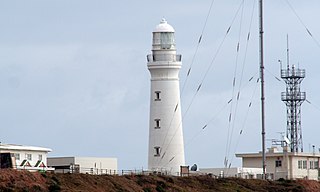
Nightjars are medium-sized nocturnal or crepuscular birds in the family Caprimulgidae and order Caprimulgiformes, characterised by long wings, short legs, and very short bills. They are sometimes called goatsuckers, due to the ancient folk tale that they sucked the milk from goats, or bugeaters, their primary source of food being insects. Some New World species are called nighthawks. The English word "nightjar" originally referred to the European nightjar.

Paul Brunton is the pen name of Raphael Hurst, a British author of spiritual books. He is best known as one of the early popularizers of Neo-Hindu spiritualism in western esotericism, notably via his bestselling A Search in Secret India (1934) which has been translated into over 20 languages.

Arthur Edward Spence Hill was a Canadian actor. He was known in British and American theatre, film and television.
Haemogregarina is a genus of haemoprotozoans, parasitic mainly on cold-blooded vertebrates. They are unicellular organisms which are parasitic in the red blood cells. Haemogregarina infects lower vertebrates as intermediate hosts and leeches.

Irōzaki Light is a lighthouse located on a hill at the outermost extremity of Cape Irōzaki south of the town of Minamiizu, Shizuoka Prefecture, Japan on the southernmost extremity of Izu Peninsula. It is located within the borders of the Fuji-Hakone-Izu National Park.

Tsurugisaki Lighthouse is a lighthouse located on Cape Tsurugi on the southeastern extremity of the city of Miura, Kanagawa Prefecture, Japan on the southernmost and eastern tip of Miura Peninsula.
Ethel Isabel Lang, also known as Ethel Brunton, was an Australian actress prominent as a pioneering local radio performer during the 1930s, but also appeared in numerous stage roles. From the age of seven she appeared in school plays and concerts before being asked to play Napoleon's son in The Royal Divorce. Stage roles included Shakespeare's Macbeth and The Merchant of Venice

Kinkasan Lighthouse is a lighthouse on Kinkasan, an island off the Oshika Peninsula in Ishinomaki, Miyagi, Japan.

Inubōsaki Lighthouse is a lighthouse on Cape Inubō, in the city of Chōshi, Chiba Prefecture Japan. It is notable as one of the few lighthouses whose original lens was a first order Fresnel lens, the strongest type of Fresnel lens. It is a Registered Tangible Cultural Property of Japan. The lighthouse is located within the borders of the Suigo-Tsukuba Quasi-National Park.

Anorisaki Lighthouse is a lighthouse on the top of Shima Peninsula in the city of Shima, Mie Prefecture, Japan.

Novocrania is a genus of brachiopods found off shore.

Synoicus is a genus of 4 species of Old World quail.
Barbara Joan Brunton Gibb, from around 1949 professionally known as Barbara Brunton, was an Australian actress of stage and radio, active between 1940 and 1952.
The following is a taxonomy of extant (living) Brachiopoda by Emig, Bitner & Álvarez (2019). There are over 400 living species and over 120 living genera of brachiopods classified within 3 classes and 5 orders, listed below. Extinct groups are not listed.

Parasemionotiformes is an extinct order of neopterygian ray-finned fish that existed globally during the Triassic period. It comprises the families Parasemionotidae and Promecosominidae. Many of the included genera are monotypic and most species lived during the Early Triassic epoch.
Megerlina is a genus of brachiopods belonging to the family Kraussinidae.
Joania is a genus of brachiopods belonging to the family Megathyrididae.
Cancellothyris is a genus of brachiopods belonging to the family Cancellothyrididae.
Rhipidomella is an extinct genus of brachiopod belonging to the order Orthida and family Rhipidomellidae. Specimens have been found in Carboniferous to Permian beds in southwest Asia, the Moscow Basin, and North America.










